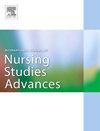儿童压力损伤风险评估工具:系统综述
IF 3.1
Q1 NURSING
International Journal of Nursing Studies Advances
Pub Date : 2025-08-13
DOI:10.1016/j.ijnsa.2025.100410
引用次数: 0
摘要
背景:儿科患者的压力性损伤与发病率、死亡率增加和住院时间延长有关,因此确定有效的风险评估工具在临床实践中至关重要。准确的风险评估在临床实践中至关重要。虽然存在几种评估工具,但它们的适用性和有效性在儿科人群中有所不同。目的确定和评估用于评估儿童压力损伤风险的工具,重点关注其特征、验证人群、可靠性和在不同临床背景下的适用性。进行了DesignA系统评价。方法本系统评价(PROSPERO: CRD42024527687)按照Cochrane手册进行。在pubmed、b谷歌Scholar、CINAHL、Web of Science和embase这五个数据库中进行了全面的检索,检索了2010年1月至2024年3月间发表的研究。符合条件的研究包括描述儿童压力损伤风险评估工具的开发、使用或验证的研究。两名独立评审员进行了选择和评估过程。使用QUADAS-2和QAREL检查清单评估方法学质量,并一般参考COSMIN指南。结果在筛选的964项记录中,28项研究符合纳入标准,包括来自15个国家的研究,其中巴西最具代表性。研究集中在儿科和新生儿重症监护病房、普通病房和外科病房。确定了10种不同的风险评估工具,包括Braden Q、Braden QD和Glamorgan量表。布雷登QD量表是对布雷登Q量表的改编,包括医疗器械相关的风险,是最常被评估的。其他工具,如儿童压疮预测和评估工具和布雷登Q+P,是专门为儿童和新生儿使用开发或调整的。结论所有鉴定的工具均具有可接受的效度和量表间信度。然而,没有一种工具被证明普遍适用于所有儿科情况。Braden QD、Braden Q和Glamorgan量表是最全面的,特别是在重症监护环境中,与国家和欧洲压疮咨询小组的建议一致。需要进一步的研究来提高工具在儿科护理环境中的准确性和上下文适应性。本文章由计算机程序翻译,如有差异,请以英文原文为准。
Assessment tools for the risk of pressure injury in children: A systematic review
Background
Pressure injuries in pediatric patients are associated with increased morbidity, mortality, and prolonged hospital stays, making the identification of effective risk assessment tools critical in clinical practice. Accurate risk assessment is essential in clinical practice. Although several assessment tools exist, their applicability and effectiveness vary across pediatric populations.
Objective
To identify and evaluate tools designed to assess the risk of pressure injuries in children, focusing on their characteristics, validation populations, reliability, and applicability across different clinical contexts.
Design
A systematic review was conducted.
Methods
This systematic review (PROSPERO: CRD42024527687) was conducted in accordance with the Cochrane Handbook. Comprehensive searches were performed in five databases—PubMed, Google Scholar, CINAHL, Web of Science, and Embase—for studies published between January 2010 and March 2024. Eligible studies included those describing the development, use, or validation of pressure injury risk assessment tools in children. Two independent reviewers conducted the selection and appraisal process. Methodological quality was assessed using the QUADAS-2 and QAREL checklists, with general reference to COSMIN guidelines.
Results
Of 964 records screened, 28 studies met the inclusion criteria, encompassing research from 15 countries, with Brazil being the most represented. Studies focused on pediatric and neonatal intensive care units, general wards, and surgical units. Ten different risk assessment tools were identified, including the Braden Q, Braden QD, and Glamorgan scales. The Braden QD scale—an adaptation of the Braden Q including medical device-related risk—was the most frequently evaluated. Other tools, such as the Pediatric Pressure Ulcer Prediction and Evaluation Tool and the Braden Q+P, were specifically developed or adapted for pediatric and neonatal use.
Conclusions
All identified tools demonstrated acceptable validity and inter-rater reliability. However, no single tool proved universally applicable across all pediatric contexts. The Braden QD, Braden Q, and Glamorgan scales emerged as the most comprehensive, particularly in intensive care settings, aligning with National and European Pressure Ulcer Advisory Panel recommendations. Further research is warranted to enhance tool accuracy and contextual adaptability across pediatric care environments.
Guidelines
PRISMA.
求助全文
通过发布文献求助,成功后即可免费获取论文全文。
去求助
来源期刊

International Journal of Nursing Studies Advances
Nursing-General Nursing
CiteScore
5.80
自引率
0.00%
发文量
45
审稿时长
81 days
 求助内容:
求助内容: 应助结果提醒方式:
应助结果提醒方式:


